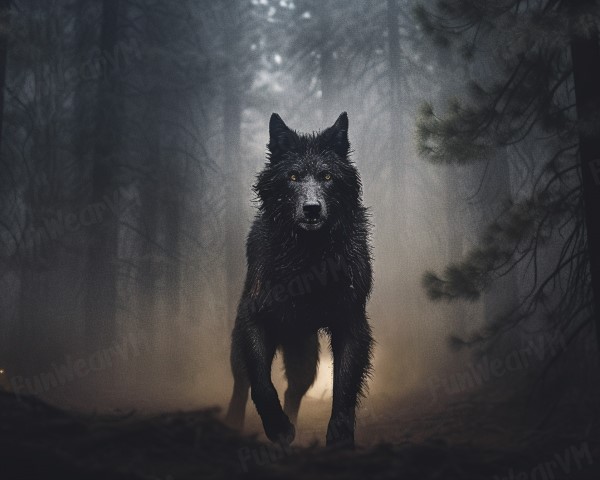
Skin-walkers are a type of harmful witch who has the ability to turn into, possess, or disguise themselves as an animal. The term is never used for healers. They are also known as yee naaldlooshii in the Navajo language, which translates to “by means of it, it goes on all fours”. They are one of several varieties of skin-walkers in Navajo culture; specifically, they are a type of ‘ánti’įhnii.
According to some traditions, skin-walkers were once healers and medicine men who were corrupted by their own power and turned to evil – in modern times, comparisons are frequently made with the Sith Lords of the Star Wars universe. To become a skin-walker, one had to commit a terrible sin, such as killing a close relative or breaking a taboo. By doing so, they gained supernatural abilities, but also lost their humanity and morality.
What can skin-walkers do?
Skin-walkers have a range of powers that make them formidable foes. They can transform into any animal they desire, usually those associated with death or bad omens, such as coyotes, wolves, bears, owls, crows, or foxes. They can also possess living animals or people and walk around in their bodies. [1] [2] Some legends say they can even mimic the voices of people they know to lure them into traps.
Skin-walkers are also adept at using curses, spells, and potions to harm their enemies. They can inflict diseases, cause accidents, manipulate dreams, or create bad luck. They can also use objects such as bones, feathers, fur, or skin to make their magic more powerful. Some stories say they can control the weather, fly, or become invisible.
How can one protect oneself from skin-walkers?
Skin-walkers are very hard to kill or even detect. They can use their shapeshifting abilities to blend in with their surroundings or escape from danger. They can also use their magic to deflect bullets or weapons. However, there are some ways to ward off or fight back against these evil beings.
One way is to use silver bullets or silver weapons, which are said to be effective against skin-walkers. Another way is to use fire, which can burn their animal skins and expose their true form. A third way is to use traditional Navajo ceremonies and rituals, such as the Blessing Way or the Enemy Way, which can cleanse the person or place from the influence of skin-walkers.
Another important thing is to never speak the name of skin-walkers out loud, as this can attract their attention or give them power over you. The legend of the skin-walkers is not well understood outside of Navajo culture due to reluctance to discuss the subject with outsiders. [1] Adrienne Keene, Cherokee Nation activist and founder of the blog Native Appropriations, has written in response to non-Navajos incorporating the legends into their writing that when this is done,
“We as Native people are now opened up to a barrage of questions about these beliefs and traditions…but these are not things that need or should be discussed by outsiders. At all. I’m sorry if that seems ‘unfair’, but that’s how our cultures survive.”
Conclusion
Skin-walkers are more than just mythical monsters. They are a part of Navajo history and culture that reflect their worldview and values. They are also a source of fear and respect for those who believe in them. Whether you think they are real or not, there is no doubt that they are fascinating and terrifying creatures that deserve our attention.
References:
